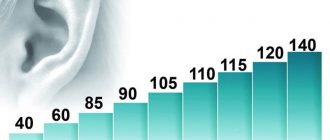Equivalent and maximum sound levels during daytime and nighttime
According to clause 6.3 of SN 2.2.4/2.1.8.562-96, permissible values of sound pressure levels in octave frequency bands, equivalent and maximum sound levels of penetrating noise in residential and public buildings and noise in residential areas should be taken according to Table 3 (Appendix to SN), according to which in the living rooms of apartments the equivalent and maximum sound levels are:
- from 23.00 to 7.00 hours (at night) should not exceed 30 and 45 dBA;
- from 7:00 to 23:00 hours (daytime) should not exceed 40 and 55 dBA.
Similar indicators of acceptable sound pressure levels are specified in Appendix No. 3 to SanPiN 2.1.2.2645-10, approved by Resolution of the Chief State Sanitary Doctor of the Russian Federation dated June 10, 2010 No. 64
Sound meter
An informative and fully customizable noise detector, capable of collecting statistics according to a schedule, or by pressing the Start button. Regardless of the method, the service helps you find out whether your neighbors are disturbing the peace with loud noise, whether the music is playing very loudly after 23:00, and whether it’s time to change your sound equipment.
You don’t have to pay for the proposed functionality of the application - the developers provide the entire range of capabilities for free and even without advertising. The only negative is that the language is again exclusively English.
Maximum sound level in the apartment day and night: 55 and 45 dBA
The maximum permissible sound levels in apartment rooms are also indicated in the Decree of the Government of the Russian Federation of January 28, 2006 N 47 “On approval of the Regulations on recognizing premises as residential premises, residential premises unsuitable for habitation and an apartment building as unsafe and subject to demolition or reconstruction”, in paragraph 26 which is indicated:
In a residential building, permissible sound pressure levels in octave frequency bands, equivalent and maximum sound and penetrating noise levels must correspond to the values established in current regulatory legal acts, and not exceed the maximum permissible sound level in rooms and apartments during the daytime of 55 dB, in night - 45 dB. At the same time, the permissible noise levels created in residential premises by ventilation systems and other engineering and technological equipment must be 5 dBA lower than the specified levels during the day and night.
What is noise and how does it affect the human body?
Scientists have proven that noise poses a health hazard. It causes a number of different diseases such as hearing loss, deafness, people begin to suffer from insomnia, as well as cardiovascular disorders, all of which are a consequence of the effects of noise on the body. To test vibration, you can contact our EcoTestExpress laboratory.
Under the constant influence of noise, the pulse and breathing may increase, and the psyche may be disturbed. Scientists have also proven that a person’s exposure to noise causes his aggressiveness. A person cannot get used to noise; it also reduces efficiency and productivity. Recent studies have shown that greater sound intensity can also cause various pain sensations. Therefore, when coming home, each of us just wants to be in silence, without being distracted by annoying sounds.
We invite you to familiarize yourself with: Sample, example: How to write a petition for deferment of payment of state duty
By noise we usually mean random sound vibrations that vary in frequency and intensity (however, from a physiological point of view, any sound that is perceived negatively can be considered such).
Sources of loud sounds are conventionally divided into:
- Mechanical.
- Hydraulic.
- Aerodynamic.
- Electrical.
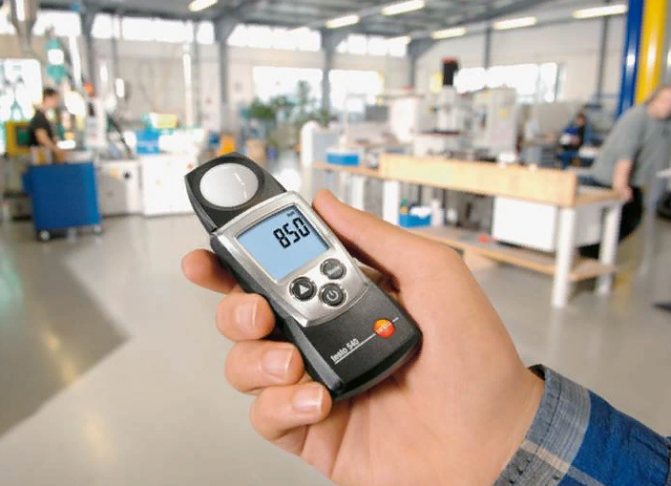
Initially, it was assumed that excessive noise in the workplace or home only affected hearing function.
So you can deal with the noise of a hammer drill without measurements.
To go to court, collect the following evidence:
- protocol of the district police officer;
- a certificate from a representative of the housing office about the facts of violation of silence;
- testimony from affected neighbors;
- evidence of repeated warnings to the neighbor;
- video, audio recording of noise.
And even measurements are not necessary to achieve justice.
An example of this is the decision of the Tomsk court to impose a fine on a fan of loud music, which, according to him, sounds within the normal range. But, since the normative music still irritated the neighbors, the court considered it unacceptable.
In addition to administrative punishment, an extreme measure may even follow - eviction from the apartment (293 Art.
play the ukulele
to play on drums
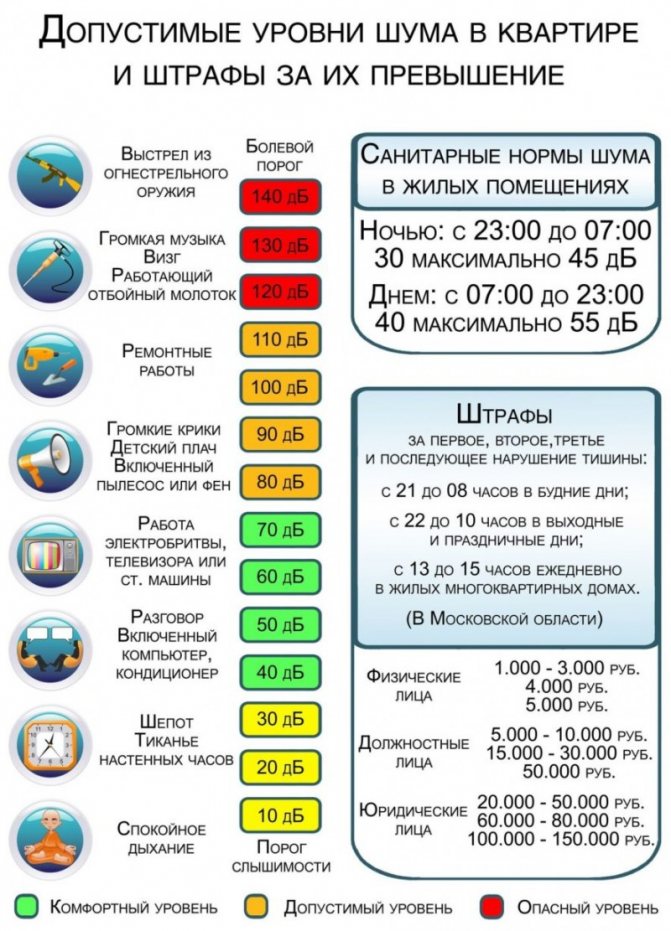
play "Jingle Bells" on the piano
Determine what key the song is in
Research by scientists has shown that constant noise not only interferes with proper rest, but is also dangerous to health.
It is impossible to get used to regular exposure to extraneous sounds.
Responsibility for violation
For failure to comply with the noise level law, a person may be held liable.
- The following places are identified where the reproduction of loud noise is punishable by law:
- Apartment buildings, as well as premises in them;
- Local areas;
- Premises belonging to medical, cultural, recreational institutions;
- Territories belonging to dacha communities.
Prosecution is carried out within the framework of administrative proceedings.
In order to bring the prescribed liability to the measures, an authorized employee must draw up a procedural document - a protocol.
When is the permissible sound pressure level below 30 dBA? – 5 dBA
Sound pressure levels in octave frequency bands in dB, sound levels and equivalent sound levels in dBA for noise generated in rooms and areas adjacent to buildings by air conditioning systems, air heating and ventilation systems and other engineering and technological equipment of the building itself should be accepted 5 dBA lower (amendment = minus (-) 5 dBA) specified in Appendix 3 to these sanitary rules (the amendment for tonal and impulse noise in this case should not be accepted) (clause 6.1.3. SanPiN 2.1.2.2645-10 ).
For example, a measurement is made (at night) of the noise level created by the operation of an elevator, or by a ventilation, air conditioning, heating system, etc. The sound level meter showed a value of 29 dBA equivalent sound level (with an allowable 30 dBA, according to Appendix 3 to SanPiN 2.1.2.2645-10). Excess or not?
Based on the provisions of clause 6.1.3. SanPiN 2.1.2.2645-10, sound levels and equivalent sound levels in dBA, should be taken 5 dBA lower, respectively, the permissible sound level will be 25 dBA, i.e. there is an excess of the permissible sound level.
When there is no point in doing an examination
Air conditioning in an apartment building causes a lot of inconvenience to neighbors during the hot season.
As you know, windows are almost always open and the noise this equipment makes greatly disturbs night sleep. If its noise at night exceeds 60 dB, you should contact the housing inspection. The municipal commission must consider the appeal and determine the existence of an administrative violation, based on regulations at the regional level.
There is no need to respond to noisy neighbors in kind and, out of spite, play loud music, plow through walls and shout, and even more so use physical force. Such methods will place you among the ranks of offenders, which entails some responsibility.
If the neighbors are noisy and are not interested in other people's dissatisfaction, then they should file a lawsuit. Before doing this, it is advisable to perform 4 steps:
- Collect evidence of noise ordinance violations. Special devices for measuring decibels or contacting special supervisory authorities can help with this.
- It would not be superfluous to check the permitting documentation with the builders and the organization carrying out the work. Her absence will be an advantage during court proceedings.
- There will probably be other neighbors who are unhappy with the annoying noise. You need to enlist their support and write a complaint together.
- Call a local police officer who will document the noise, which will help in further proceedings in court.
At night, all sounds are heard much louder, which often becomes the cause of quarrels between neighbors.
There are situations in which it is pointless to carry out an examination or noise measurement, even if the rules have been violated. There are a number of reasons that no one can control, such as a baby crying. This cannot be controlled, which means there is no violation as such.
If you really are faced with such a problem, then you should understand the reasons and do everything possible to resolve the conflict. It is better not to bring the matter to court, but to try to resolve everything peacefully. Even if the noise disappears, it is only with good relations between you and your neighbors, so choose the right solutions.
Dear readers!
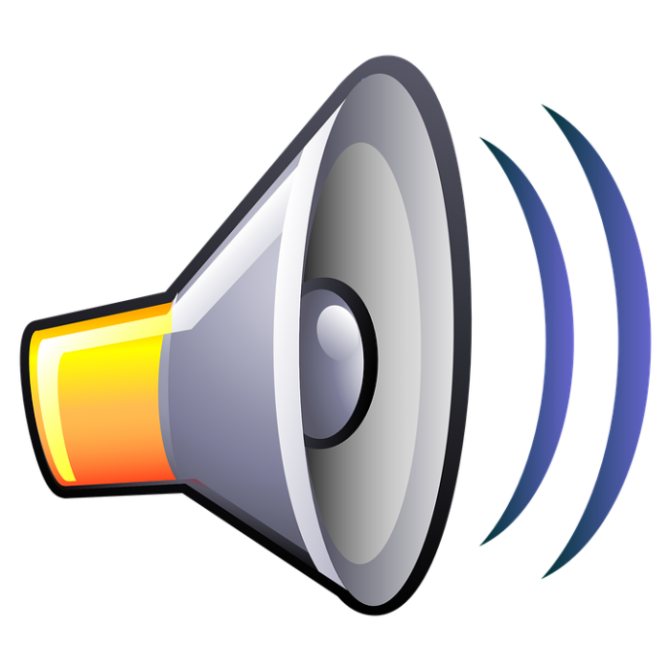
It's fast and free! Or call us by phone (24/7).
The apartment is our fortress, which protects us from a huge number of different external irritants. Unfortunately, very often such a factor as noise prevents you from fully relaxing after a hard day at work. It is worth noting that residents of large cities suffer most from noise. Lately, even various noise-insulating devices have not been able to fully protect against this scourge. First, let's define what noise is.
Noise is random vibrations of various physical natures that differ in the complexity of their temporal and spectral characteristics. Today noise is one of the causes of environmental pollution.
How is the noise level measurement procedure regulated?
The procedure and procedure for measuring noise levels is provided for in the Methodological Instructions. MUK 4.3.2194-07 “Noise level control in residential areas, in residential and public buildings and premises”, approved by Rospotrebnadzor on 04/05/2007 (hereinafter referred to as MUK).
A citizen ignorant of technical issues is unlikely to be interested in complex formulas for calculating noise level indicators, but some general rules for determining the noise impact of different sources are not difficult to understand. Often, due to their non-compliance, the measurement results are subsequently rejected by the court as evidence that is not reliable.
Responsibility for exceeding the permissible noise level
In the practice of the Supreme Court, there are cases where a fine is imposed for loud music, despite the fact that the upper limit can reach 55 decibels. The court's decision was based on the fact that loud music was causing inconvenience to neighbors.
Please note! In accordance with Government Decree No. 25 of January 21, 2006, when living in an apartment building, residents must comply with the following rules:
- fire safety regulations;
- take into account the rights of neighbors;
- observe sanitary hygiene standards;
- comply with environmental legal requirements.
According to Article 23 of the Constitution of the Russian Federation, the personal life of a citizen must be protected. Therefore, violation of noise levels is perceived as a violation of the principles of personal integrity.
According to Art. 6.4 of the Code of Administrative Offenses of the Russian Federation, violation of sanitary and epidemiological rules for the operation of residential premises and public premises, buildings, structures and transport entails:
- imposing a fine on citizens in the amount of 500 to 1000 rubles;
- for officials - from 1000 to 2000 rubles;
- for persons carrying out entrepreneurial activities without forming a legal entity - from 1000 to 2000 rubles or suspension of activities for up to 90 days;
- for legal entities - from 10,000 to 20,000 rubles or suspension of activities for up to 90 days.
The need for an expert to take into account background noise in judicial practice
We are talking about taking into account background noise from sources located in the immediate vicinity of a residential building, for example, tram tracks, car parking, kiosks, gas stations, etc. (for taking into account the influence of background noise, see Table 1 of the Guidelines, paragraphs 2.7. - 2.16 MUK). Examples from judicial practice:
1. The order of Rospotrebnadzor to reduce the noise level of the store was declared illegal by the court
The Office of Rospotrebnadzor issued an order to the Company regarding the need for its activities (operating a store on the ground floor of a residential building) not to worsen the living conditions of people in a residential building: to take measures to reduce the noise level from the operation of the refrigeration equipment of the trading floor, refrigeration chambers, and the compressor of the grocery store.
The company did not agree with this order and appealed it to the court.
The court refused to declare the order illegal for the following reasons.
As follows from the expert opinion, the maximum permissible sound pressure levels were exceeded when operating the store equipment. At the same time, the expert's conclusion and his testimony are incomplete. The conclusion does not indicate where the windows of this room face (to the courtyard, onto the road), the presence or absence of other noise sources, and the frequency of measurements during the time periods specified in the conclusion. The windows of the apartment's living space overlook the roadway, where tram tracks are also located; in the immediate vicinity there are: car parking, kiosks, gas stations; Air conditioning is installed on the fifth floor. However, it is not possible to determine the noise level from these objects from the case materials (see Resolution of the Arbitration Court of the West Siberian District of October 22, 2014 in case No. A45-22660/2013).
2. A specialist’s conclusion on excess noise levels in the absence of background noise measurements indicates a significant violation of the requirements of the MUK, as evidenced by judicial practice
For example, the order of the administrative body was declared invalid on the following grounds: the appellate court indicated that when measuring noise levels, violations of the methodological instructions “Control of noise levels in residential areas, in residential and public buildings and premises were committed. MUK 4.3.2194-07".
By virtue of paragraph 2.6 of these guidelines, the measurement of the noise impact of the equipment should have been carried out first with the boiler system turned on, and then at the same points with it turned off (measurement of background noise).
The department's cassation appeal contains no arguments that the noise measurement carried out complies with the guidelines developed by the Federal Service for Surveillance on Consumer Rights Protection and Human Welfare. The appellate court correctly concluded that the administrative body did not prove the excess noise in the specified residential building from the operation of the boiler room (see Resolution of the Federal Antimonopoly Service of the North Caucasus District dated September 30, 2013 in case No. A32-21997/2012)
When there is no point in doing an examination
Dear readers!
In the case when a noise level study is carried out by order of the judicial authorities, the expert immediately begins to perform the work after receiving a document that displays the tasks assigned to him.
This is necessary in order to prove a violation of Russian legislation. As a rule, an examination from Rospotrebnadzor is carried out in cases where the case is resolved in court.
Measuring noise volume with a conventional device will not work in this situation. This is due to the fact that it is the expert opinion of a specialist that matters to the court.
In a situation where the measurement is carried out as part of a court hearing, all costs of the examination are subsequently borne by the losing party.
The situation is different in situations where a citizen, on his own initiative, writes an application to the authorized bodies to call a specialist and check the noise level.
Prices vary significantly in different regions. Let's take Moscow as an example. Here, the measurement price includes several elements:
- Departure of a specialist.
- Drawing up the protocol.
- Drawing up a conclusion for the court.
In total, a specialist visit will cost a citizen thirty thousand rubles. This cost may be increased when a specialist visits on weekends or holidays.
In regions remote from Moscow, the cost of measurement can be significantly lower.
The difference between the background and measured noise level of the equipment is less than 3 dBA
How to understand the provision of the MUK: “If the difference between the measured and background noise level is less than 3 dBA, then it is unacceptable to use the measurement result”?
In the case when the noise level is measured in an apartment of a residential building located within a large city, the background noise level will be significant, especially if we are talking about a house located along central streets and highways. In addition, background noise consists of many other sounds of different frequencies that are not always clearly distinguishable by the human ear. This is the functioning and vital activity of the city: all types of transport, the operation of equipment both in nearby houses and enterprises and in remote ones, noise caused by human actions, natural phenomena, animals, birds, etc. The sum of all this constitutes background noise.
Let's give an example. Residents complain about the noise emitted by the equipment located inside the house, namely, the forced ventilation systems used by the LLC for the operation of the cafe and store.
We take into account that according to clause 2.11 of the MUK, if the noise source is located inside the building, when taking measurements indoors, the windows and doors of the premises must be closed.
We close the windows and doors. We take measurements. For daytime, the permissible noise level values are not exceeded, but for night time, the sound level meter showed a value of 29 dBA equivalent sound level (which is more than the permissible 25 dBA according to paragraph 6.1.3. SanPiN 2.1.2.2645-10.
We measure the background noise level. To do this, turn off the forced ventilation system. The sound level meter showed 27 dBA. That is, the difference between the measured and background noise levels was less than 3 dB, which means it is unacceptable to use the measurement result.
What does this “inadmissibility” mean in practice? This means that the court will not be able to establish that the permissible noise level from the operation of the equipment has been exceeded and will not conclude that the rights of citizens have been violated; will not oblige the defendant to eliminate the violations committed, since the difference between the background and the noise from the source is so small that it should be perceived within the meaning of MUK 4.3.2194-07 rather as an error.
Noisy neighbors: fixing the problem
For residents who are faced with the problem of noisy neighbors, there are several options to solve the problem:
- have a conversation with your neighbors. It is possible that they are unaware that they are causing inconvenience to others;
- in some cases the police are called;
- write a statement to the district police officer. He will register such an apartment and conduct regular inspections;
- application to the court. This refers to an extreme solution to the problem. To draw up a statement of claim, you need to have an expert opinion on the noise level.
A collective complaint has a good effect. In addition, during the inspection, residents will be held additionally accountable if it turns out that the apartment is being used for other purposes.
Is it possible to measure the noise level in an apartment not only in the living room, but also in the kitchen?
We believe that measurements in the kitchen will not give an objective result for the following reasons.
As a rule, in the kitchens of residential buildings there are risers for cold and hot water supply and sewerage, the shutdown of which is impossible by definition. We believe that taking measurements in the kitchen (if there is another room or rooms) is not based on the requirements of the above paragraph 2.10 of the MUK, especially considering that at night citizens are mostly in the bedroom (if measurements are taken at night).
Moreover, in the kitchen, as a rule, household appliances are located: at a minimum, a refrigerator (which is the main source of noise not only in the kitchen, but often in the entire apartment), at most, several more units of household appliances, which even in “ standby" (connected to the mains) emits noise.
The measurement protocol must contain information about turning off all household appliances located on the premises before taking measurements.
Also, the noise measurement protocol must contain information about the position of windows and doors at the time of measurements (for example, that the windows and doors were closed if the noise source is located inside the building).
Digital sound level meter or online sound level meter? What to choose?
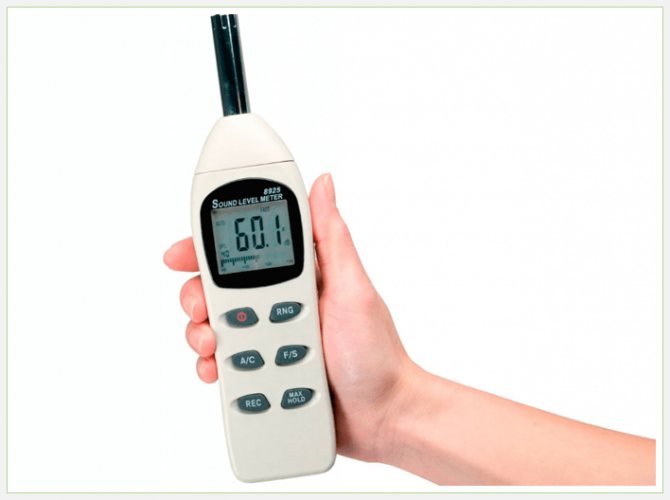
Here you should pay attention to how accurate the result you need. An online service may be suitable for approximate results. It does not produce the most accurate numbers, but there is no need to buy additional equipment that may come in handy once. So if you have a good enough microphone, then this option will be the most economical.
A digital device is suitable for those for whom higher accuracy of readings is important and there is a possibility that the device will be used more than once. But it should be borne in mind that the price range can be very wide and will depend on the model and accuracy class.
Consistently eliminate individual noise sources
So, let’s imagine that residents of apartments in a residential building complain about excessive noise in their apartments from the operation of equipment. At the same time, a variety of equipment operates and, accordingly, makes noise in the house. This includes the ventilation system and external air conditioning units, the heating system and elevators, and maybe something else.
It is necessary to determine which equipment creates discomfort for the residents of the house, and only then will the court, in response to the tenant’s claims, oblige it to either be dismantled or soundproofed.
There are instructions on this matter in MUK 4.3.2194-07.
According to paragraphs. 1.8. 1.9. of the specified Methodological Instructions, the assessment of the noise level for compliance with hygienic standards is carried out taking into account all sources of noise that impact the room or territory. In this case, requirements are applied that take into account the features of assessing the noise of individual sources established by these guidelines... To assess the contribution of individual noise sources to the overall acoustic environment, it is necessary to measure the sound level (sound pressure), sequentially including or excluding individual noise sources.
Classification of instruments for measuring noise and vibration
Existing devices can be divided into 4 classes depending on which their scope of use is determined:
- Class 0 represents the highest accuracy class of the sound level meter. Such devices are reference. They are very accurate and have a small error due to the use of expensive materials and complex elements.
- Grade 1 is usually used in laboratory work. They are suitable for various hygiene studies and assessment of working conditions. Such equipment also gives a very small measurement error.
- Class 2 is used when taking various vehicle indicators and assessing equipment performance. Although they give a more noticeable error, when measuring the operation of equipment it is not so large.
- Accuracy class 3 is already used at home. And measuring noise in decibels with such a device usually has an error of 1-4 decibels.
Distance from the sound level meter to the human body. Availability of a tripod
According to clause 1.13 of the Methodological Instructions, the microphone of the sound level meter must be directed towards the main source of noise and removed at least 0.5 m from the person conducting the measurements.
It may follow from the noise measurement protocol that, for example, a noise and vibration analyzer “Assistant Total” and a metal tape measure were used. There is no reference to using a tripod in the protocol. That is, when taking measurements, the noise and vibration analyzer was in the expert’s hand (at least it’s difficult to assume otherwise).
Meanwhile, this circumstance also affects the values obtained during measurements.
For example, recognizing the noise measurement protocol as inadequate evidence, the court stated the following:
“..the reference to the fact that when measuring noise levels, the use of a tripod is not mandatory, since this is not provided for in the Methodological Instructions, is subject to rejection, because What is important is not the presence (absence) of a tripod during measurement, but the distance from the sound level meter to the body of the person taking the measurements, since acoustic waves reflected from the plane of the chest can overlap the microphone membrane of the sound level meter and thereby create additional sound pressure, distorting the measurement results.
In this case, the Office of Rospotrebnadzor for the Orenburg Region did not provide evidence that, in the absence of a tripod, the person taking noise measurements kept the distance of 0.5 m established by the Methodological Instructions.” (see Decision of the Orenburg Regional Court dated November 1, 2012 in case No. 12-165-2012).
Sound level meter online
Nowadays it is not necessary to have a device at hand to conduct such a study. A laptop or phone can easily help with this. There are various applications that require installation or sites where there is an online sound level meter. They process the sound received from the microphone. But here you should take into account both the quality of the sound recording device and the distance between it and the noise source. Although an online sound level meter for PC is a free analogue, it can also give very distorted results. They may have an error much higher than measurements obtained from a third-class accuracy device.
Information about the competence of experts
The absence in the noise measurement protocol of information about the competence of the specialists conducting the measurements is an additional basis for doubting the reliability of the evidence. The courts also pay attention to this.
For example, coming to the conclusion that the protocol for measuring noise levels is not reliable evidence, the court referred to the fact that measurements of noise from construction sites were carried out without taking into account the general background, and also indicated that “the measurement protocol does not contain information about the expert who signed him, his competence, work experience, information about whether he has passed the appropriate certification” (see Appeal ruling of the Moscow City Court dated September 10, 2013 in case No. 11-12342).
Sound level meter device
If we look at the sound level meter in detail, we can highlight the following components:
- Microphone.
- Amplifier.
- Corrective filters.
- Integrator.
- Display.
Another device for measuring noise in decibels is equipped with a power supply and, in some cases, a tripod. We can measure noise levels using first class precision equipment. After all, it is important that the permissible noise level for humans is not violated, otherwise this can lead to various health problems.
Sound insulation check
Doors and windows are the elements through which various noises can enter the apartment. And therefore, the level of their sound insulation is of greater importance for a comfortable stay.
This level can be determined using simple testing. Some kind of noise source is needed here. You can just turn on music on your phone and close the door.
After which the sound level meter is turned on, a measurement is taken, the door is opened and the operation is repeated. You will get two indicators of the device. Subtract the smaller from the larger number. This is the isolation level.
For best accuracy, make sure that there is no unnecessary noise in the apartment. You also need to check that the sound does not pass through the walls.
